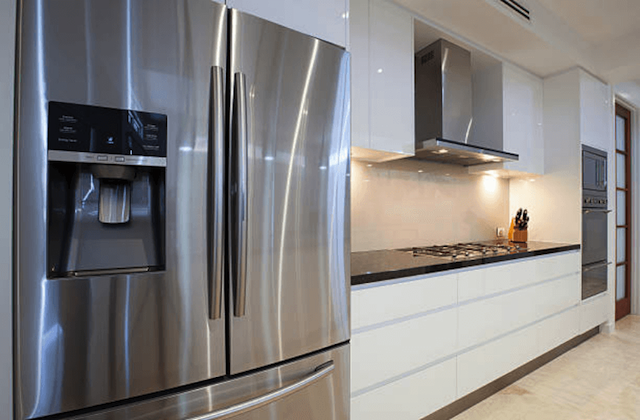
ASAP Scottsdale Appliance Repair offers refrigerator repair in Scottsdale, including services to repair broken ice makers. Learn about some common ice maker problems below:
Ice makers are perhaps one of the most convenient inventions ever. This is a small luxury a lot of people certainly not appreciate. Ice makers are relatively simple machines that don’t have a lot of parts that could have issues.
Like with any appliance repair, there are a few basic things that should be reviewed before thinking the worst. And, remember, if needed, you can replace your ice maker without replacing the entire fridge, depending on the brand and model. First, let’s take a look at a couple of the reasons for an ice maker failure.
When the ice maker is making ice but it is not ejecting it it is usually means there’s a mechanical problem opposed to an electrical failure. This happens when shifting things around in the freezer, you jam the control arm up or down. Most of the time the ice maker will be jammed with something else, even another piece of ice. So, check to see if there’s anything blocking this part from working correctly.
Before starting the process of clearing out the freezer, ensure the ice maker is on. This can be done by pulling the metal control arm down. From time to time, moving things around in the freezer may put the switch into the off position. If the control arm is clear, then there might be food jammed inside of the ice maker or it’s not getting a good connection.
Check the Control Arm
When the control arm is down and there is ice but it’s not ejecting it, there might be a mechanical or electrical problem. This will need some more troubleshooting. Ready to proceed? First, we must inspect the electrical connection. This can be unplugged from the rear of the freezer or refrigerator when moving or shifting the freezer contents.
To check this, unplug the refrigerator and slide it out away from the wall. Turn off the water supply. Locate the connection on the back of the inside of the freezer. Basically this is what plugs the ice maker into the freezer. Ensure that it’s actually plugged in properly.
Next, remove all of the ice that’s in the ice maker itself. This can be done by pouring in a little water to help to get ice that is in there out.
Once complete, turn on the power to the refrigerator and then turn on the ice maker. It might take the solenoid a couple of seconds to react and fill the mold. Once the mold is completely full, wait around 4-5 hours to see if you’ve cleared the problem.
Check for Frozen Lines
Other ice maker issues that might cause your ice maker to not make any ice are frozen water lines. The water lines have been clogged with frost. This is an easy issue to fix.
First, unplug the fridge and locate the water shut off valve. Shut the water off and then grab a hair dryer to heat up the water line or just let the fridge sit without being on for a couple of hours and wait until the water line is thawed.
Some models that feature a water filter that can freeze or ice over. For these situations, locating the filter is the first step. Then repeat what was done for the iced water line.
When an ice maker is not making big enough pieces of ice, there’s a problem with the ice maker settings. To adjust the settings, take the upper part of the cover of the ice maker off and find a standard dial that displays plus and a minus signs. For this process, you could need a flat head screwdriver.
ADDITIONAL REFRIGERATOR RESOURCES
- Refrigerator Noisy
- Refrigerator Water Dispenser Not Working
- Refrigerator Not Cooling
- How Does a Refrigerator Work?
